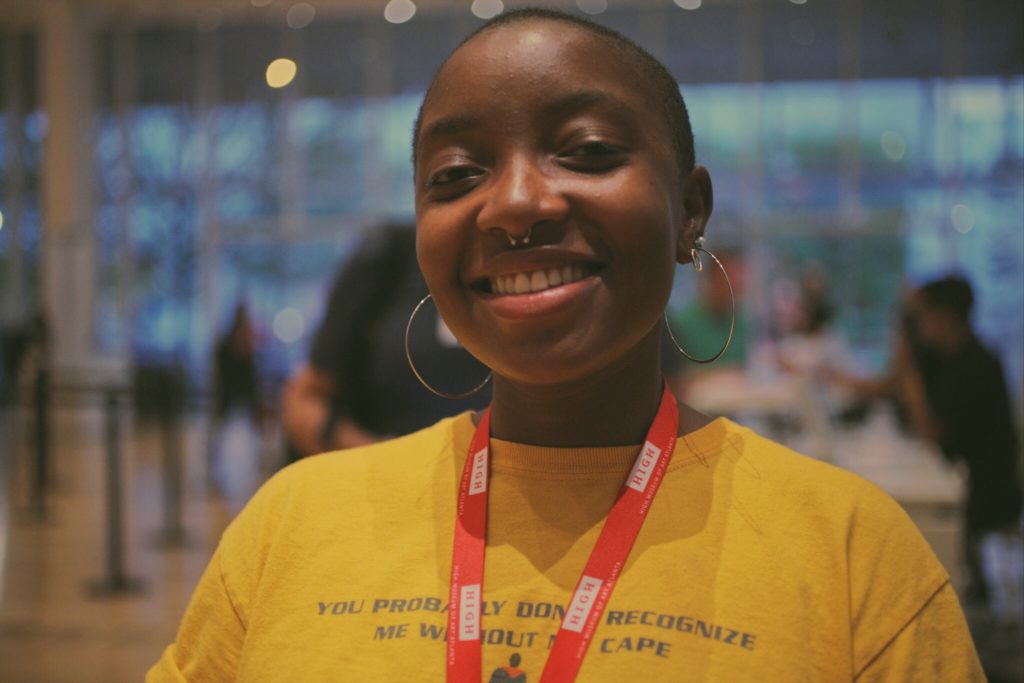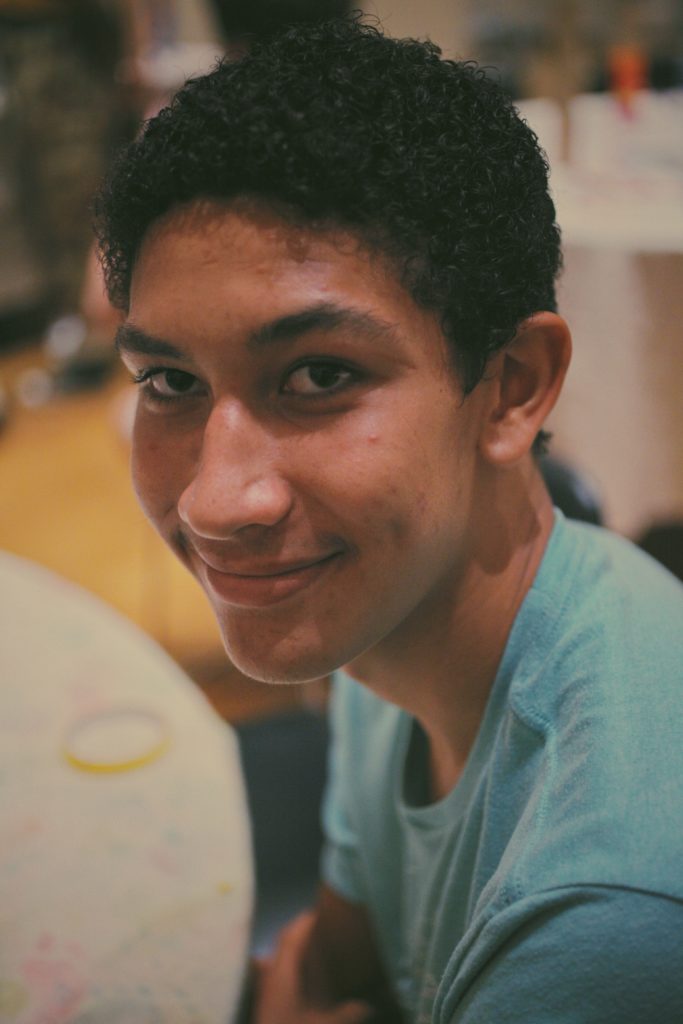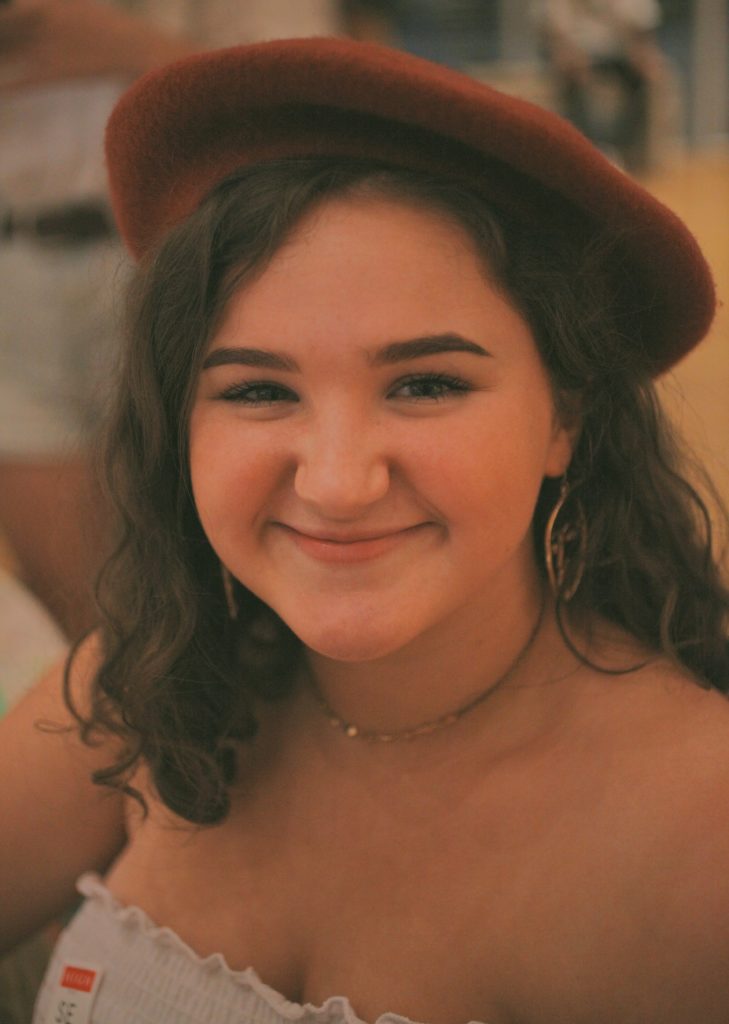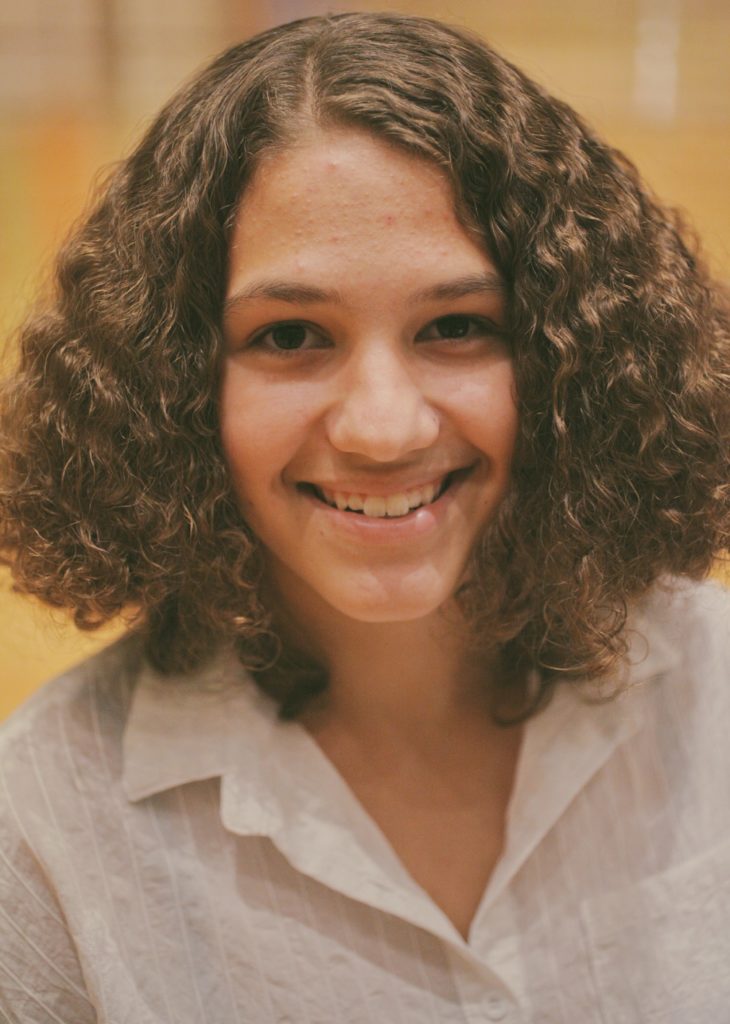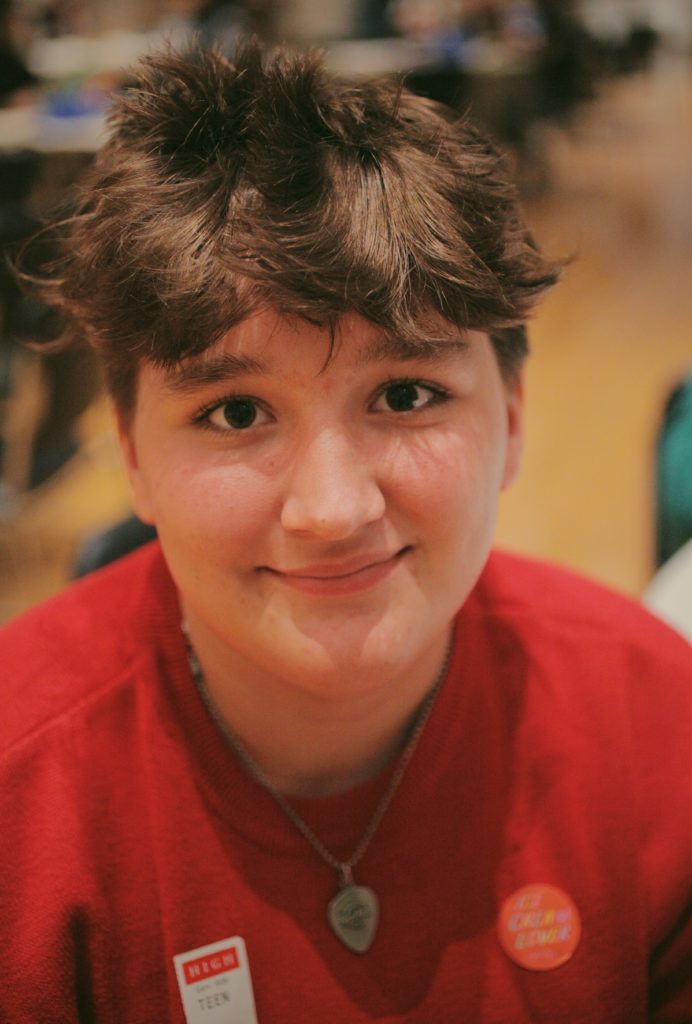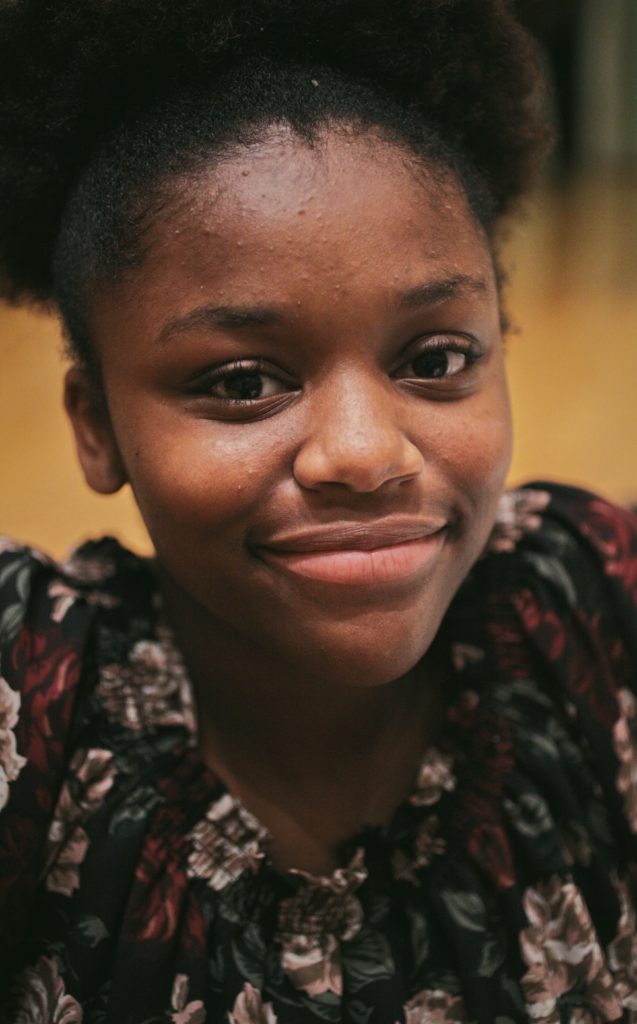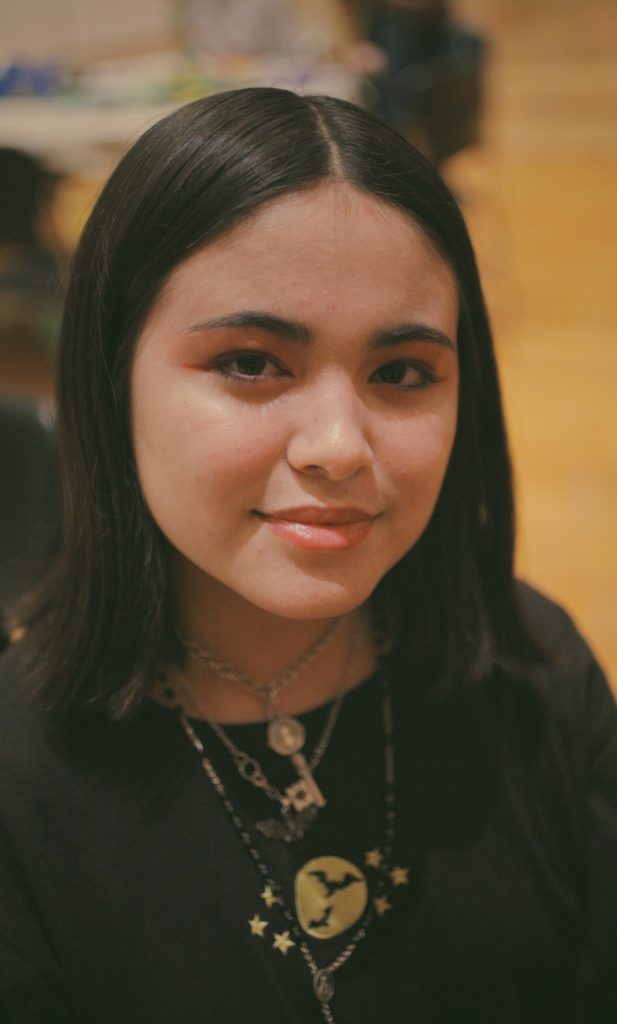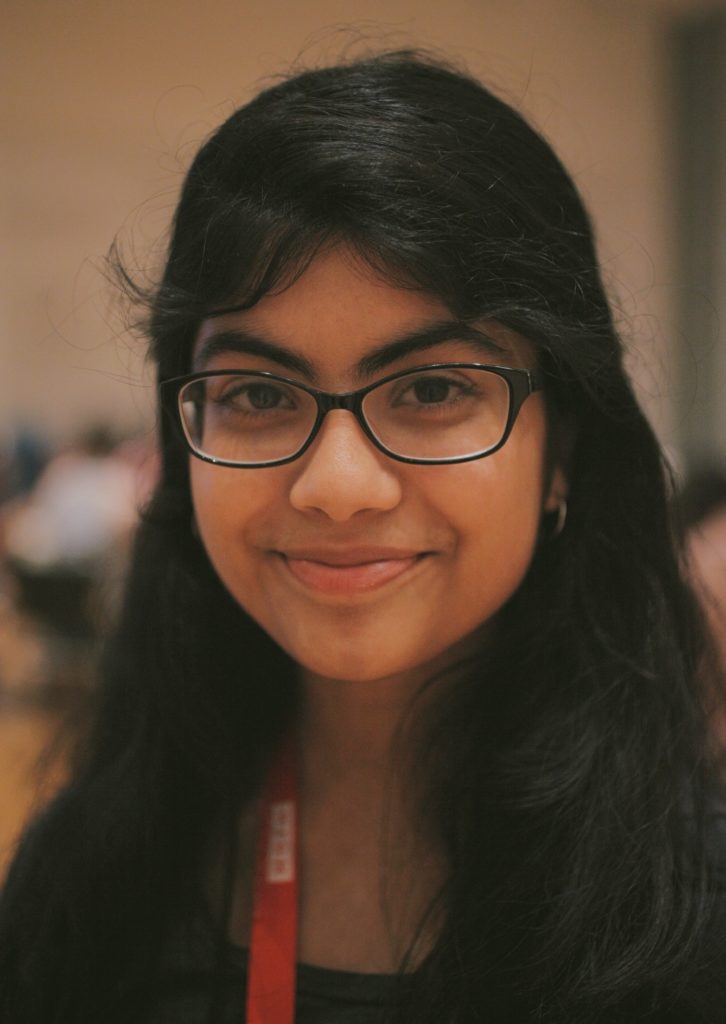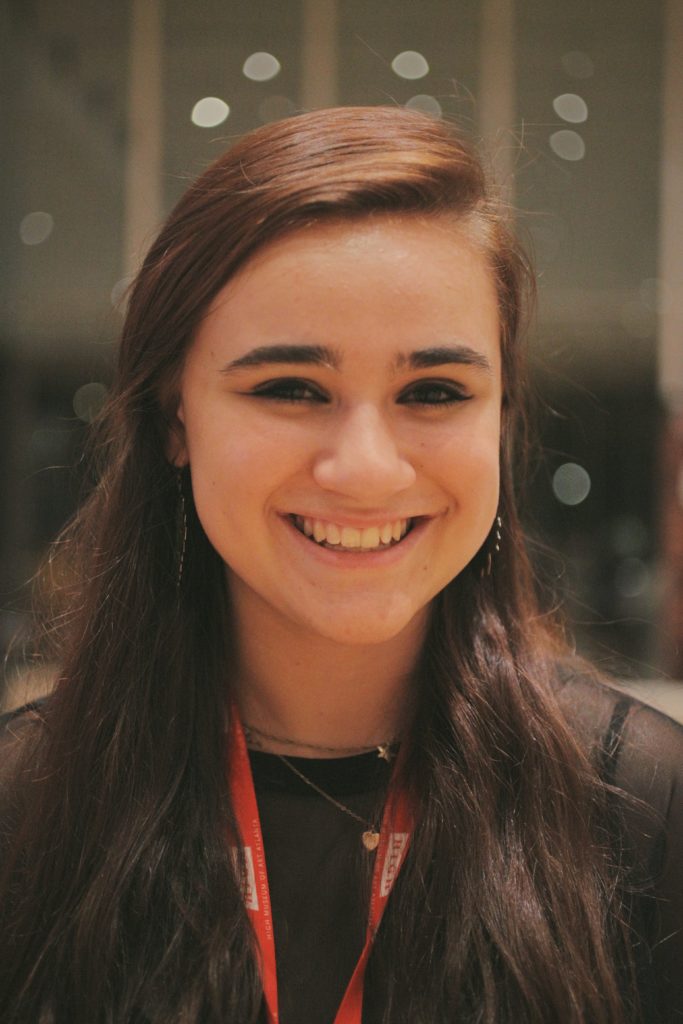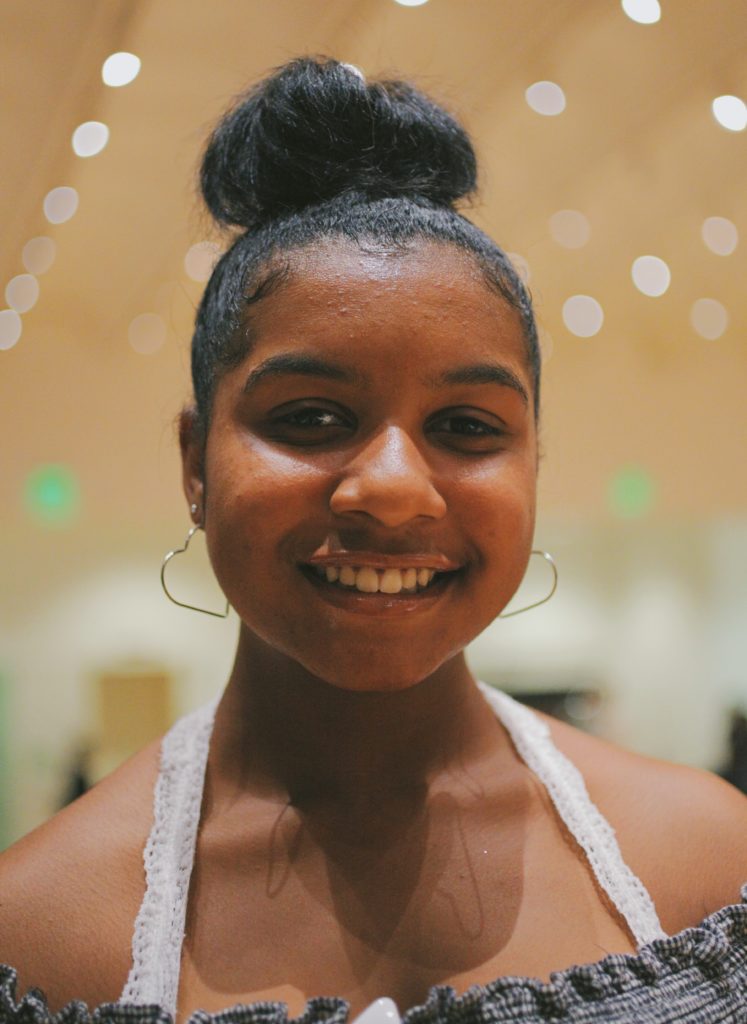Tag Archives: atlanta teen voices
Atlanta Teens Speak: Art As a Tool of Social Change
Art has been historically used as a tool of activism, especially in consideration of the public demonstration and art used as tools of civil disobedience in Atlanta throughout its civil rights struggles. The need for the intersection of art and activism has never been greater for young people victimized by gun violence, racial injustice, police brutality, discrimination, and suppression of human and civil rights.
Looking at this year of societal evolution, young people have kindled the sparks of change that have swept over this country in an inferno, from leading the March for Our Lives protests against gun violence and delivering letters to their representatives, to protesting police brutality and racial injustice, and then to showing up in droves for LGBTQIA+ solidarity in the Atlanta Pride festival this October.
Atlanta’s High Museum of Art serves as a perfect backdrop for these conversations of art and social change, holding the politically charged Glenn Kaino and Tommie Smith exhibit “With Drawn Arms,” a commentary not only on historic social justice but its juxtaposition to contemporary activism. In a time when it is more necessary than ever to amplify the voices of social justice-oriented young people, teens explore what art and activism mean to them, and how it can be used as a progressive tool for change.
Shamayam Sullivan, 17, Grady High School
I believe [activism and art] is absolutely interwoven. You need art to do activism. Many people don’t want to hear the same words being repeated, so you need something more shocking, more visual to actually resonate with them.
Francis Flannery, 15, Druid Hills High School
Art is very important to expressing people’s self and releasing themselves. Sometimes art can be used to captivate others and to show things that might not be easily discussed or conveyed in a conversation. And so art can be used to either represent or show something; the art itself can be chosen to be something that people can strive toward.
Anna Samson, 16, Stars Middle High School
Art can be interpreted in many different ways. Someone could put a very in-depth message in an art form and people could interpret it in various ways based on their beliefs and differences. I feel that it is a peaceful way to send a strong message.
Walker O’Brien 14, DeKalb School of the Arts (DSA)
Art, in general, is very much about expression and the world. I feel that activism can be interrupted through that art. I’m an acting major at DSA, and the plays you do, the characters you present, the monologues you perform — I think that all of that can very much be based on activism.
Leonardo Hinnant, 14, DeKalb School of the Arts
Art can definitely influence activism a lot. People might not know how to use their words, and instead they can portray activism using art in this way and help inspire other people.
Brittany Brantley, 13, DeKalb School of the Arts
I think that activism can be inspired by art. When you look at art, especially back in the day when there were different types social activism going on, you can discover what was happening from looking at it, and you can put what’s happening now into it.
Skyli Alvarez, 16, Alpharetta High School
I think art really relies on what’s on an artist’s mind. Artists use art to express their words without directly saying it. I think that art has always been very important in activism, such as zine-making in the 90s with Riot Grrrl and their drawings and depictions of women. They address issues in a more symbolic way because sometimes it’s hard to describe what your feeling, so they put that into art.
Sudesh Nade, 17, Druid Hills High School
I think art really has the power of influencing basically anyone, no matter what position they’re in, whether it’s of high power or if they’re just a kid looking at a piece of artwork in an art museum like the High; it can be very influential.
Ellie Kurlander, 16, Mount Vernon Presbyterian
I’m actually the president of the Ethics and Arts Club at my school, so this [art and activism] is exactly what we talk about. I definitely think that art and activism go hand in hand, because art is an amazing platform to really express injustices in the world through a larger platform that more people can really understand and have access to. Art can really be a jumping off point and can be analyzed and interpreted in ways that can create change. I think that it’s so important, and we should have these kinds of conversations and emphasize the significance art and activism have.
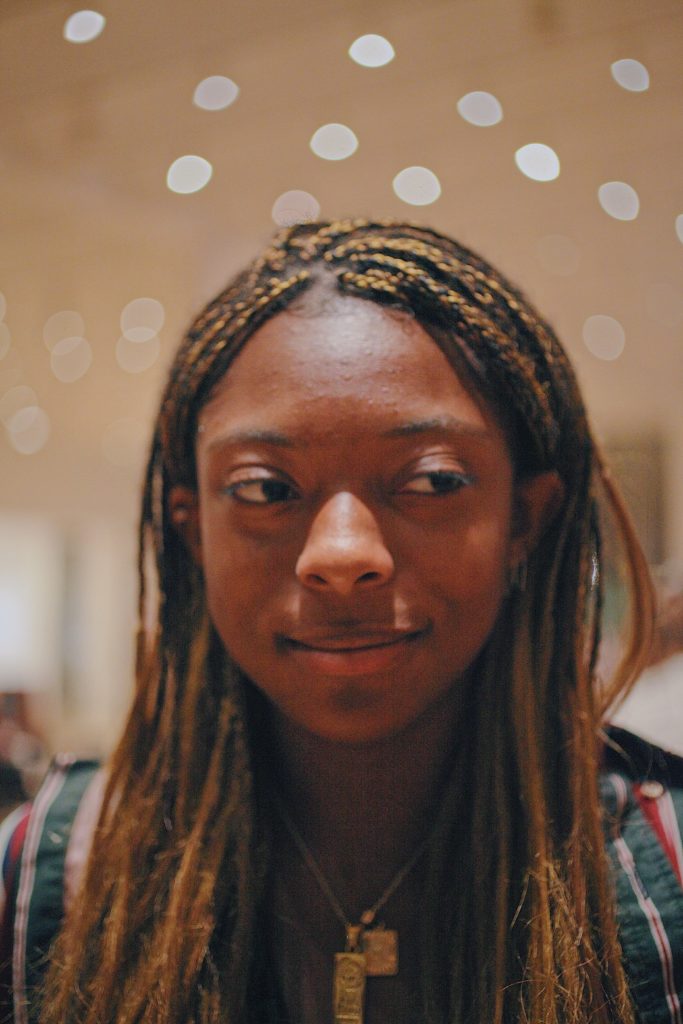
Kacey Scallion, 17, Westlake High School
I think art gives image to words. It’s easier to interpret something if you can see it, because words can have different meanings and so can art, but when you see it and you hear it, it gives a solid depiction of what it’s supposed to be. When you say words, people are like “yeah, sure,” but when they actually see something, they feel something, they touch something, it makes it a lot more like “oh wow this is real, because I can actually touch it.” I can understand words, I can hear words, but I can touch art, I can see art, and art makes me feel a certain kind of way that not necessarily words can.
Leah Greer, 16, Woodward Academy
I think that art is tied into social activism because there are so many different platforms to express your views and the way you feel about what’s happening in our country today. I’ve seen so many artists who have done activist paintings and drawings and illustrations that have impacted how I’ve seen things. I think that it is very important to reach a wide audience, especially at our age because as teens, we need to know what’s going on in our country.
VOX ATL Visits the ‘Portraying the Undocumented Experience’ Art Contest [VIDEO]
On Friday, Sept. 28 I walked through the doors of the Latin American Association and was met with an array of alluring artwork and the sound of a smooth saxophone. The night’s event, “Portraying the Undocumented Experience” art contest, invited high school students to submit their work relating to the challenges and emotions that undocumented immigrants in America may go through. Artists of all skill levels were present.
Ferin Abdulla, an art teacher at Cross Keys High School (which is demographically composed of a high percentage of immigrant and Hispanic students), told VOX ATL, “The undocumented experience, in addition to any experience that discusses immigrants in the melting pot that is America, is important. It always has been, and this is finally a time where we are providing a space and a platform for young artists to share that voice.”
Abdulla added, “So, the value of it comes in because sometimes our artists feel very alone in their experience and this provides them with a platform where they feel like they can meet like-minded people and also explore something that is very so close to their identity.”
Throughout the night I was lucky enough for many of the teens and professional artists present to be able to share their personal stories with me.
Arantza Peña Popo, a 17-year-old artist who won first prize with her piece in the contest, said, “I try to display this minimalistic kind of artwork with these two houses and it kind of demonstrates how in both places where immigrants try to find some kind of refuge they seem to be rejected.”
“For example,” she stated, “a lot of immigrants and refugees, their places of origin, they have war, or maybe there’s a lot of criminals or gangs and through that destruction, you know, they are being rejected and pushed out of their homes. And when they try to find some kind of refuge here in the United States they also feel that kind of destruction and that violence put towards them in a place where they are trying to, you know, find peace.”
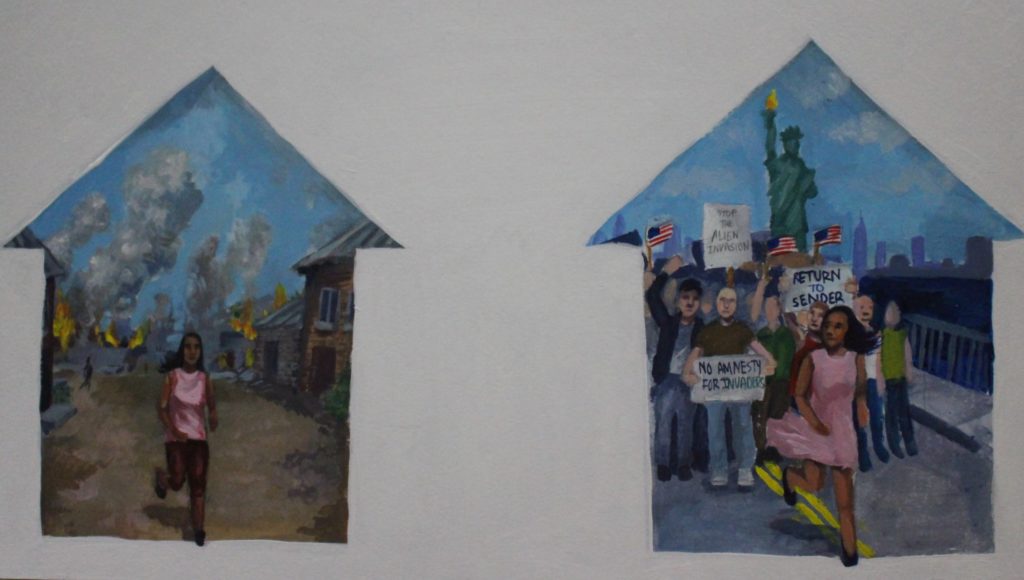
Arantza was born in Colombia and then moved to Costa Rica before immigrating to the United States. She explained how her views towards art have evolved.
“Early in high school I kind of believed that artwork, like that the highest kind of artwork was the one with the best technical ability. You know, the one that’s most photorealistic, but now as I’m going through my stages and like seeing different kinds of art, I’ve learned that it’s more about the concept and about the message.”
She continued, “You know, how you’re kind of filling up space and also creating accessibility for the general public through your artwork, and that’s helped me create a stronger message and create stronger artwork in general.”
A similar message to Arantza’s was shared by Pedro Fuertes, a professional artist who specializes in what he describes to be “surrealist abstraction.” Graciela Núñez Bedoya translated during Pedro’s interview and relayed the message, “His paintings have a lot of meanings, 50 percent of the work he does on them and that the other 50 percent depends on what the people see in them. So it’s kind of like when he’s working on them and then presents them to the public then they can start forming their own ideas of what they see in the paintings.”
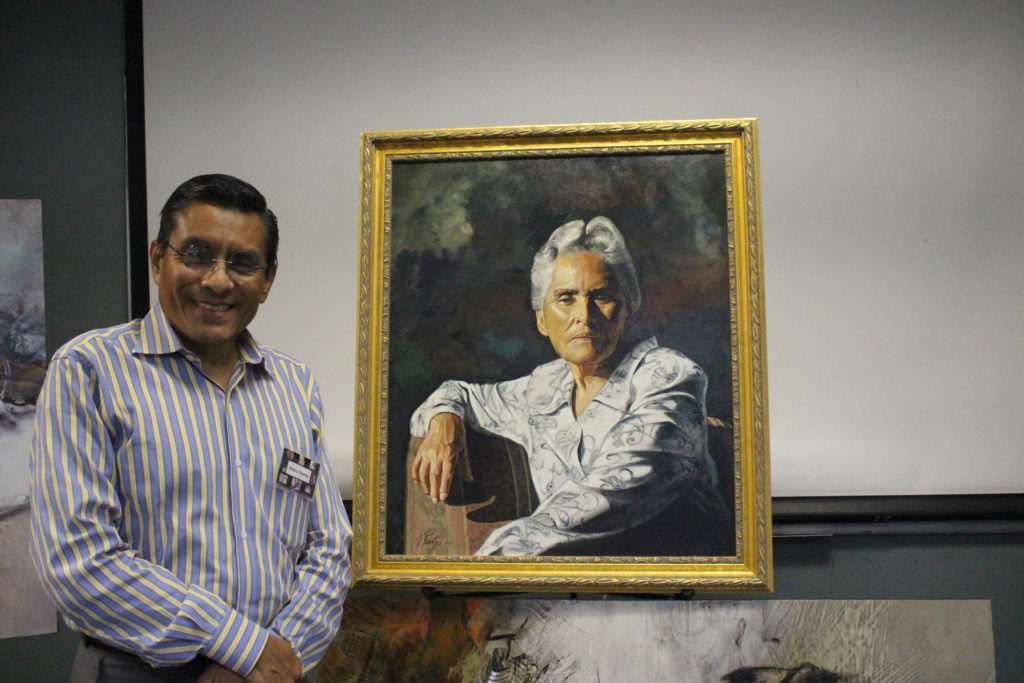
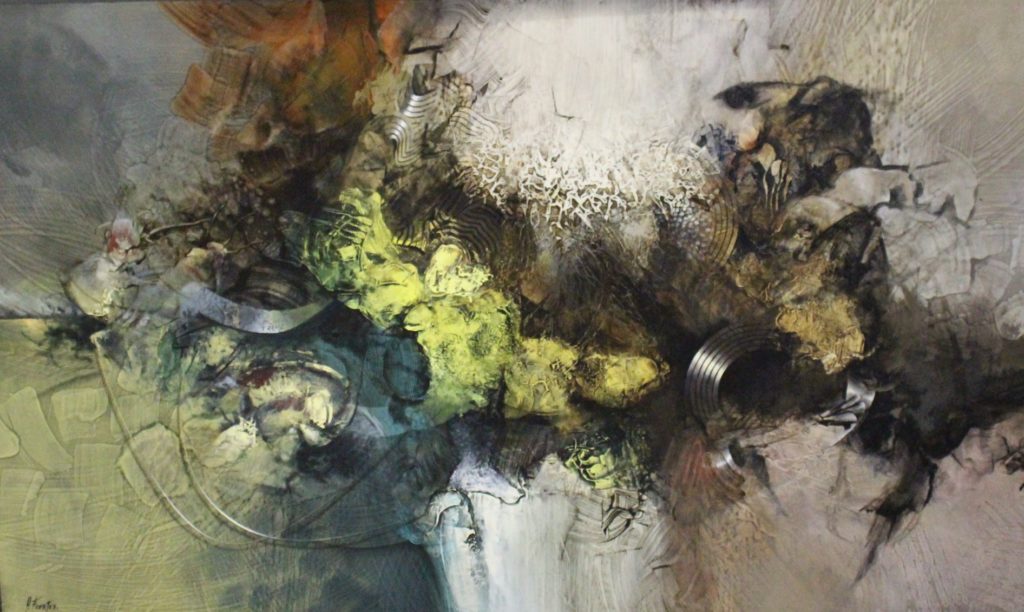
Emily Grace Guess was another one of the artists I was able to speak to that night. Her piece, “Land of the Free,” won second place. She claims that through her piece she “wanted to convey what someone would feel when experiencing being undocumented in America, and feeling that they’re unwanted. I wanted to convey that it’s like a real problem and that people need to look.”
Emily shared that she personally hasn’t had to deal with these problems but that she has had family and friends who have.
“I can say that it’s scary and that it’s really hard because they are on the edge of losing everything and having to move somewhere they really don’t want to be,” she said.
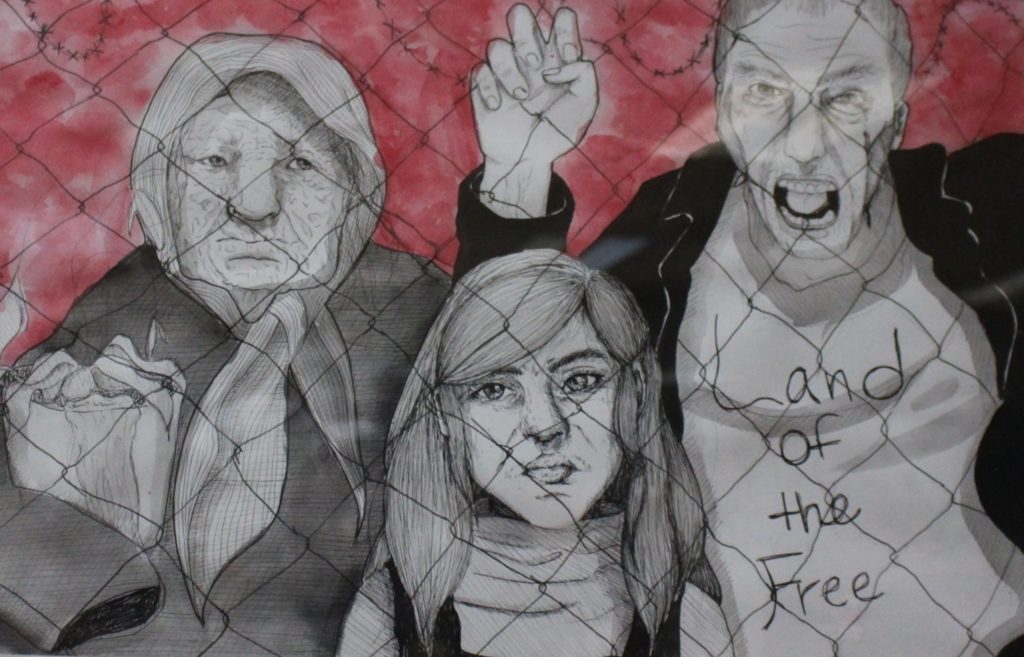
David Holloman, the third-place winner of the contest, is one example of showing his own story through his artwork. His piece depicted a family divided. When creating the piece, he drew inspiration from his own life by reflecting on his parents’ divorce. When drawing his piece, he tried to use his own hardships to emotionally connect with undocumented immigrants and how both of them may have to learn to make their way without a matriarch present to guide them in life or simply trying to go through the process of college admissions alone.
“As artists, we try to give those a voice by visually giving them that sense of awareness and to show them physically that we are here and that we stand for them, and that’s really strong,” he said. “If they [artists] have that privilege they should at least use that privilege to give to someone else because someone needs it more than you.”
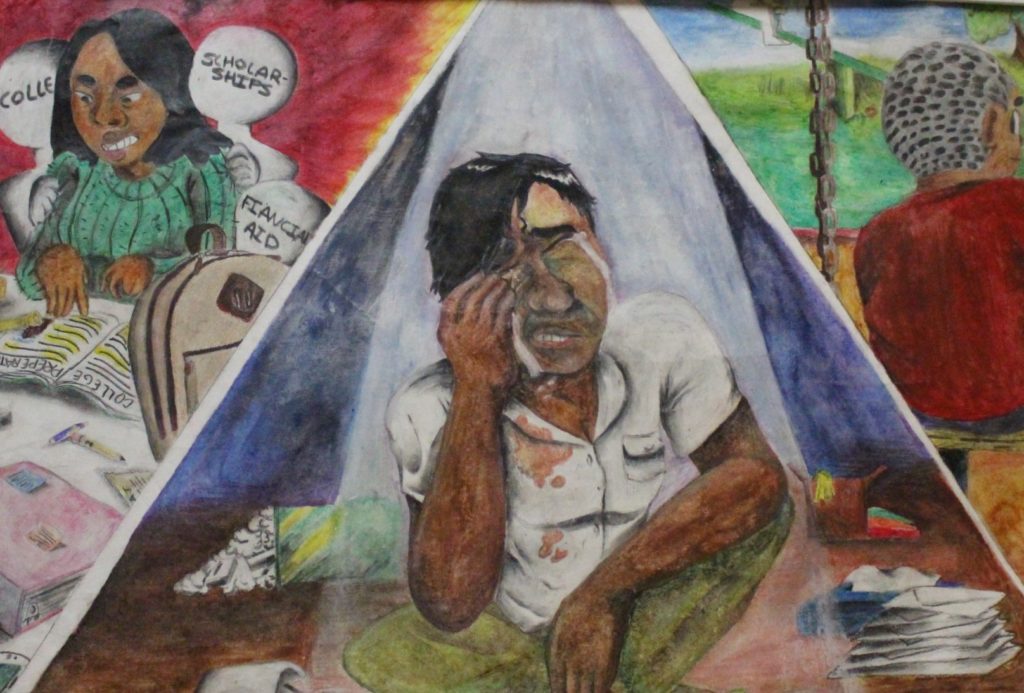
The mention of college admissions was heavily present throughout the night with many of the people I spoke to. One of the winners, Maria Balderas, was willing to share her story.
“I was in a very dark place because I was a senior. I didn’t know what to do. I had no options because all of my options were shut down,” she said. “I guess because my parents weren’t involved, and I wasn’t informed, because you know teachers don’t come up to you and say, ‘Hey are you illegal or not so I can tell you some information?’ At first, I was like ‘let me join the Army,’ because they pay for college, but I can’t join the Army. So that was one thing shut down. So then I was like ‘okay I’m going to try to go to college;’ oh, I have to pay as an international student which is four times as much as a regular person. And then it’s shut down after shut down.”
Balderas recounted that one of her teachers seemed to be sexist. One day he came up to her and said, “You should be a welder.” Of course, she was surprised at how blunt this man was being. She didn’t want to be a welder. Why did he feel that he had any say in what Maria wanted to do with her life?
Balderas continued with her story: “They would tell me ‘everybody gets into art school. It’s not worth it. You’ll get in and then nothing will happen, it’s no big deal. That’s nothing.’ So I was like ‘wow.’ They were just shutting me down, and then I would cry. Every time at school I would cry, I would go home and cry. I would just push my friends away because I was so envious of them.
“My friend, she’s also Hispanic, but she was born here and she got to go to college. She’s paying way less; she qualifies for scholarships that I don’t. I would just see all these happy people, and I was right here, depressed, feeling everything. When I tell you it’s a very bad feeling, it’s like your heart is sinking and sinking and sinking.”
Eventually, Maria was able to open up to her mom and one of her teachers about everything. Her teacher was super supportive and talked to Maria about all of her options and what she could do, even offering to adopt her. In the end, he helped Maria to secure a paid internship where she is still working today. This can only leave one wondering what Maria would have done if she didn’t have that line of support.
Another artist, Graciela Núñez Bedoya, that spoke at an artist panel later in the night also expressed how one teacher got her on the path that lead to her career.
“It wasn’t until high school when a teacher saw that I could draw the figure very well and she went through her own storage and gave me some oil paints, and that was my first time painting with oils and I fell in love with that,” she said. “Going to the point of immigrants not having the opportunity to go to school when they want to go to school, that happened to me. As soon as I graduated high school I saw my entire class go to school and graduate, and I kinda felt left behind because I didn’t have my residency yet. So applying to school wasn’t feasible [for] me because I would have had to pay as a foreign student, which is double, even triple the money of what a resident would have to pay for school. So, having said that, I became a citizen in 2014, and so after many years after I graduated high school I finally got to go to Georgia State [University] and just took advantage of college education. After working in the service industry for many years as a server, I definitely knew I wanted to be a painter.”
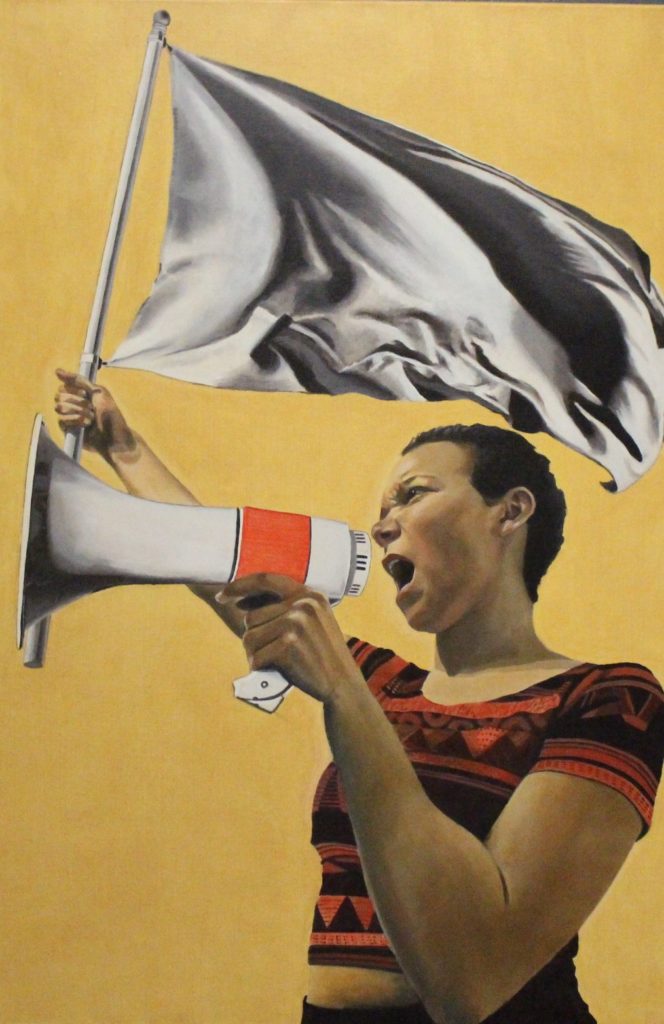
As exemplified throughout the night showcasing the undocumented experience, art can be powerful. Stanley Bermudez, the artist leading the panel discussion, opened with the statement: “Art is a window to view topics and things in a different way.” When later sharing his personal experience, this statement took on a whole new meaning.
“When I came to the United States 34 years ago, I did not speak any English. One of the counselors at the community college suggested to me — I started taking English as a second language, maybe nine months of it but I still didn’t speak a lot — he said to me, take drawing, take painting, take sculpture because that’s a visual language. You’ll be hearing the English, you don’t necessarily have to speak it but you’ll be hearing it all the time. So, I’m assuming that maybe creating artwork is a good way of listening to the language but also helping you communicate. I mean, you can draw how you feel and show it to somebody, leave me alone or I want to know you.”
Bermudez was compelled to share his story after a few words from Domingo Rodriguez-Perez, whose piece won runner’s up in the night’s contest. Now 16, Domingo moved to the United States when he was 10 years old along with his mother and sister. He talked about how when he started school it was very challenging because he didn’t understand what his teachers were telling him. Art became his outlet.
“I felt alone,” he said. “Art shows how I feel and just me, my mom, my sister, and little brother. Art shows different emotions.”
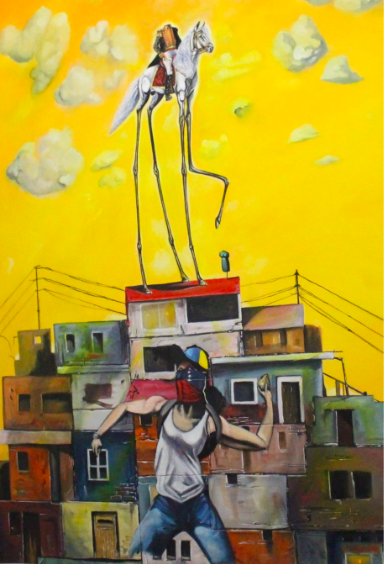
Carlos Solís, another professional artist in attendance of the night’s event, also touched on conveyance through art.
“Through the arts, you can communicate,” he said. “I’ve been trying to do that for a long time and it’s getting better, but we have to do a better job and art is a good bridge to do that.”
He also explained that is exactly what the showcase was meant to do.
“We selected a very good group of Latino artists, as you can see, and we are out there,” he added. “We are showing different places, we are doing several shows, and one of the reasons we are doing this is just to communicate, to get together, and to break stereotypes.”
Skipping forward in the night, I was returning to the gallery after shooting a video interview in the hall. A man came up to me and put his hand on my shoulder and asked, “Tu hablas español?” and I, using almost all of the knowledge I have gained from my three years in public school foreign language classes replied, “Lo siento, no.” He then said, “come with me” and proceeded to quickly lead me to six different paintings, stopping at each one to say, “look at this one.”
At the sixth painting, we stopped and he said, “In my opinion, she’s [Catalina Gómez-Beuth] the best. It’s that gaze.” He said while motioning to the nearest painting, “I wish I could afford it, but the new owner is right there.” The man then walked away. I have no idea who he was, but because of him, I knew I had to find Catalina to speak to her.
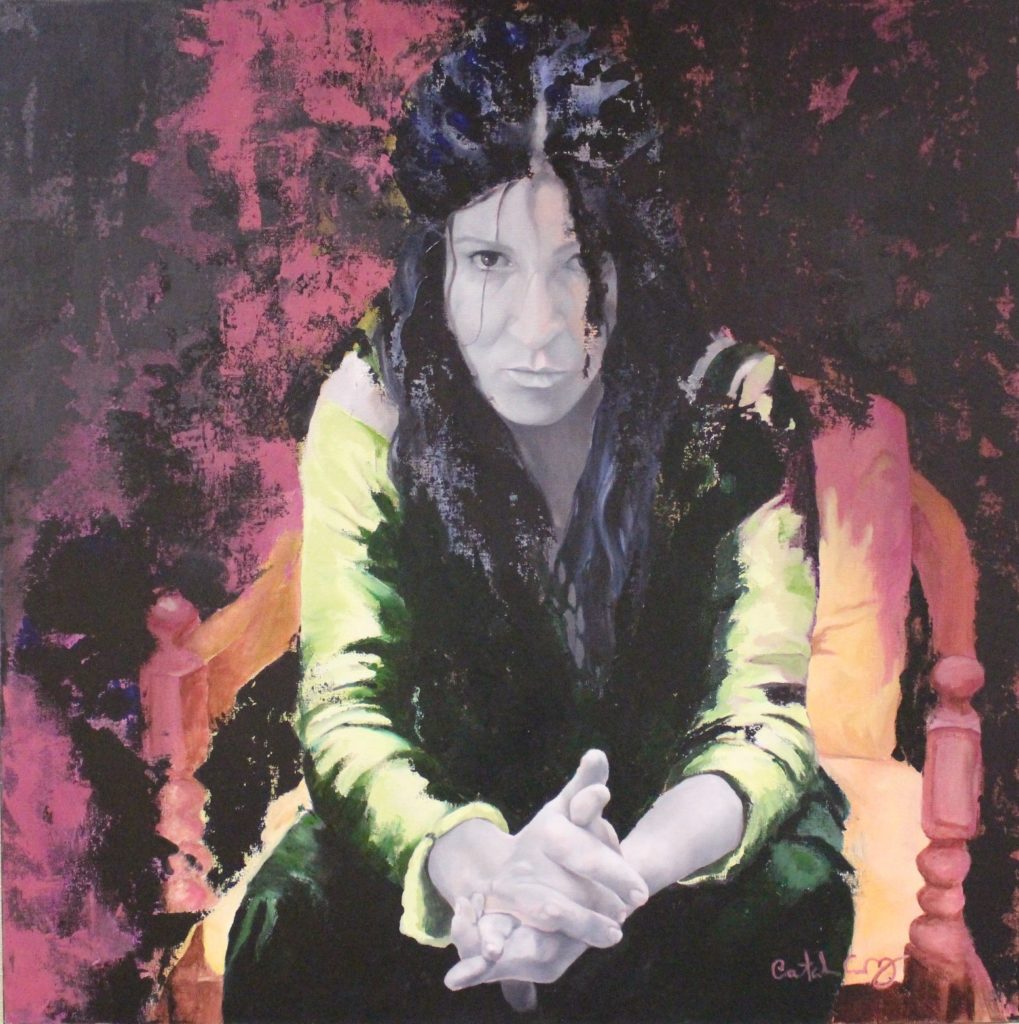
When I did meet Catalina she told me, “What I celebrate in my art is the diversity we have in this country. I see that it’s a blast in this country because I grew up in a country (Colombia) where I just had the opportunity to share with the people that were born in my city. So for me when I came here and I had the possibility to have the whole world around me, it’s something that is very special.”
I also found out that she did put a lot of thought into the ‘gaze’ the stranger I had met before mentioned.
“I put a special care on the eyes because I think that’s the connection,” Catalina said. “The eyes are what can talk [for] you and can tell the feelings and stories… Another thing that I emphasize in my art is that all the skin colors are in different shades of grey because I want to avoid the conversation about colored skin, so it doesn’t change the purpose of what I’m doing. I want people to get connected with the expressions and with the feeling with every single subject in my artwork that I have.”
I found this very interesting, mostly because of something that Maria Balderas had mentioned earlier.
“It wasn’t until 2016 when I started realizing and feeling the experience that people talk about,” she said. “That’s when you see that if you talk Spanish in a certain place you can get yelled at, you can sense the stares. That’s when you realize there’s more injustice toward people of color, not just immigrants, not just Hispanics, but people of color. People who are different, you know, different sexualities, just if you are different from the basic stereotype of a perfect American.”
Emma Mac, 15, is a sophomore at Rockdale Magnet and loves film, soup, and all living things.


